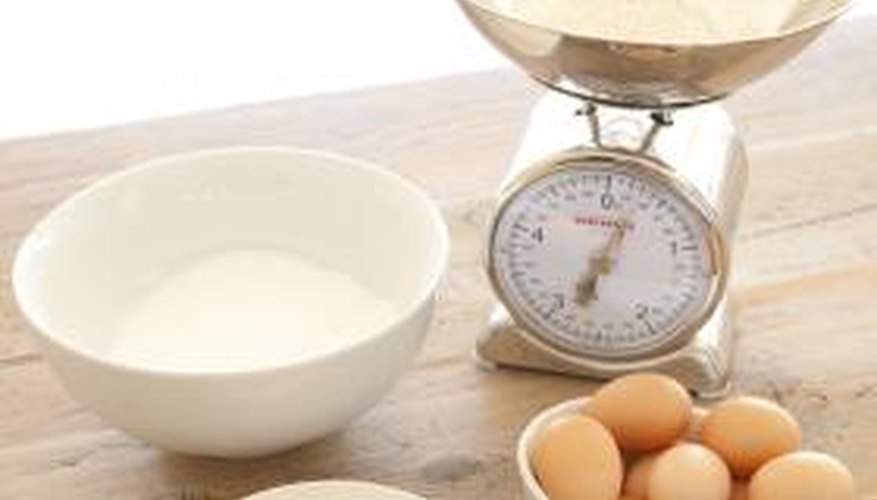Some recipes only use the weight amounts for the ingredients rather than the common tablespoons and teaspoons. When preparing these recipes, you do not need a scale for measuring out your butter. Unlike other ingredients, butter and water both weigh the same as their volume, according to online resource Baking 911. This means that you can measure out the volume of butter with a measuring cup to find its weight.
Fill a glass measuring up to the 118 ml -- or 1/2-cup -- mark with water.
Add 114 g (4 oz) to the weight of butter required in your recipe. For instance, if your recipe calls for 170 g (6 oz) of butter, add 114 g (4 oz) to get 284 g (10 oz). This will be the total volume of butter and water in your measuring cup.
- Some recipes only use the weight amounts for the ingredients rather than the common tablespoons and teaspoons.
- Add 114 g (4 oz) to the weight of butter required in your recipe.
Add chunks of butter until it reaches the total volume you calculated from your recipe amount plus four. For the example, keep adding chunks of butter until the water line reaches 284 g (10 oz).
Drain the water out of the measuring cup and add the butter in the cup to your recipe as the correct weight.
TIP
The water-displacement method for measuring butter works best for cold butter that you can't just smooth out in the cup to find your measurement, according to Chowhound.
